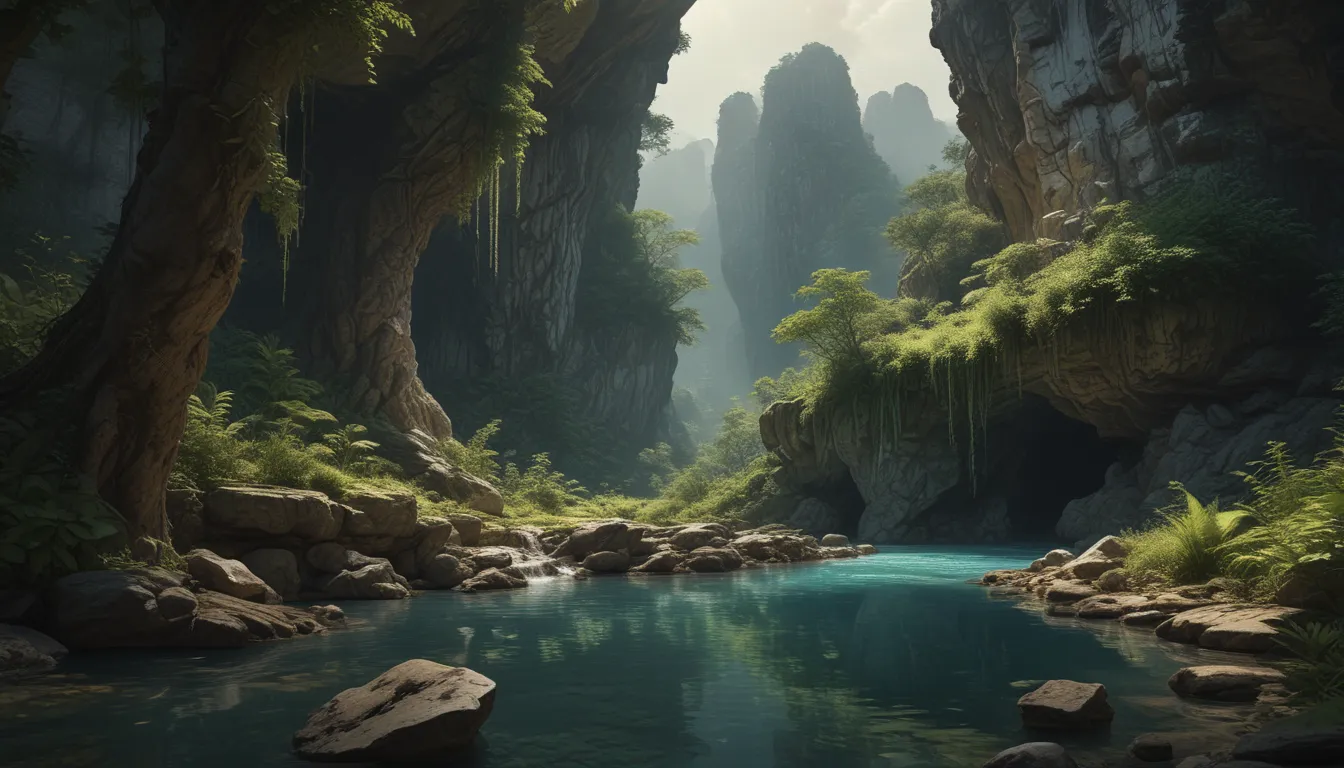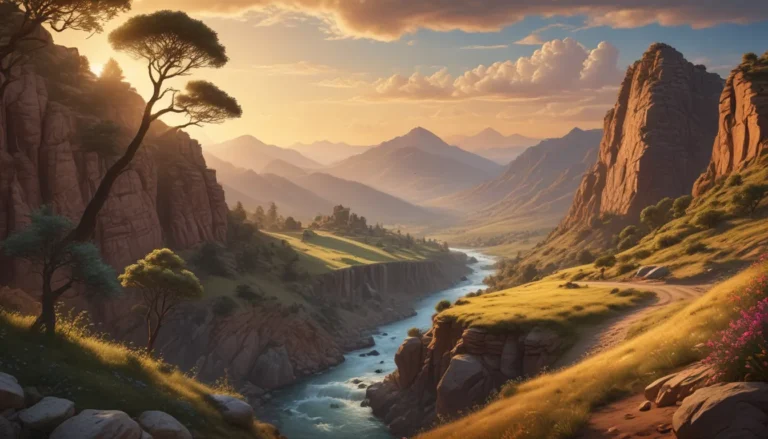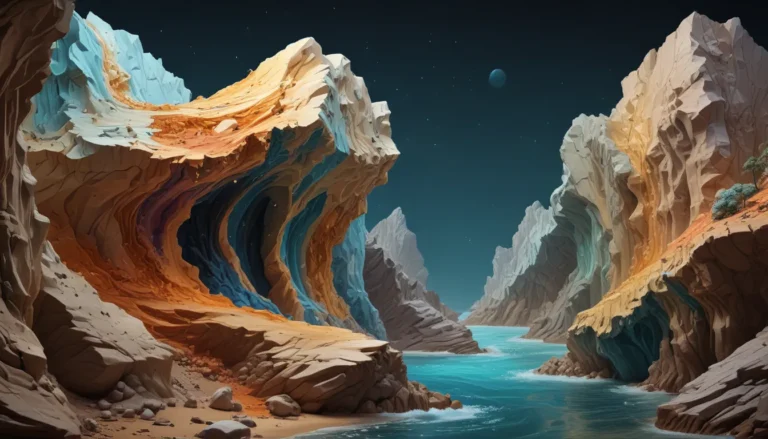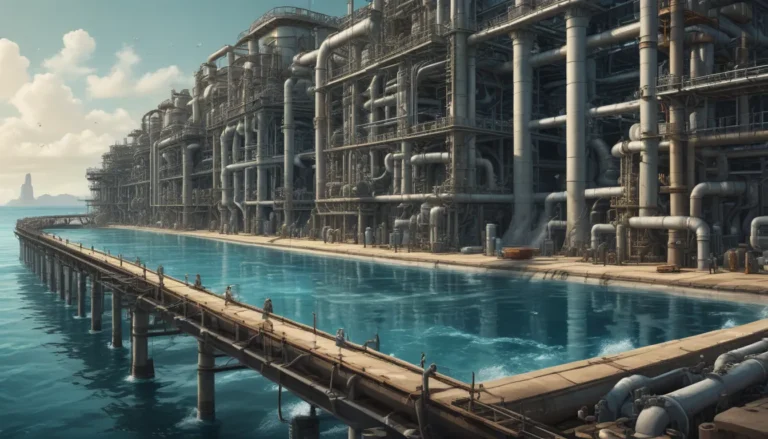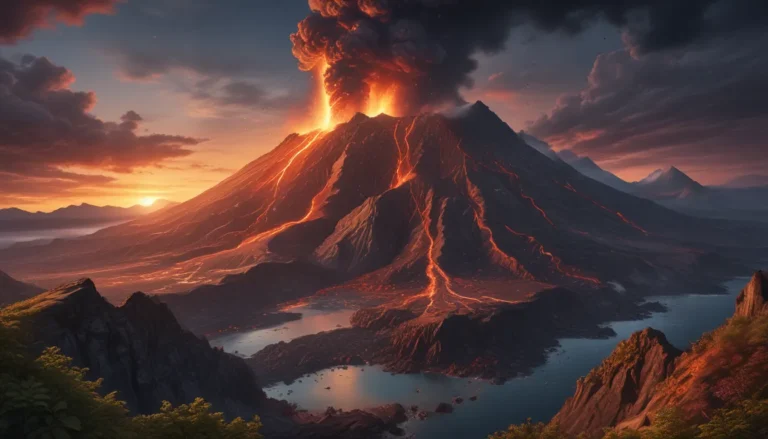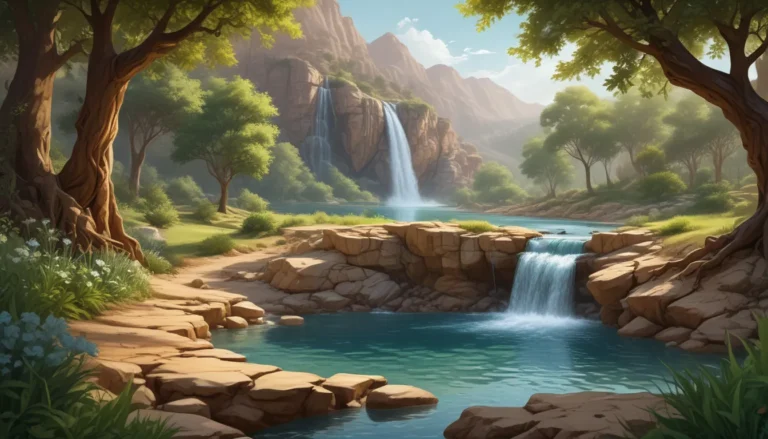A Note About Images: The images used in our articles are for illustration purposes only and may not exactly match the content. They are meant to engage readers, but the text should be relied upon for accurate information.
Karst springs are intriguing natural phenomena that have captivated scientists and explorers for centuries. These unique geological formations arise in regions where soluble rocks like limestone or dolomite create stunning displays of water flowing from underground caves and passages, shaping enchanting landscapes and serene water features. Join us on a journey to explore these enigmatic phenomena and uncover nine fascinating facts about karst springs that will deepen your appreciation for the wonders of our planet’s geology.
Exploring the Mysteries of Karst Springs
Karst springs are natural wonders with fascinating origins. These springs form when groundwater interacts with soluble rocks, such as limestone, dissolving and eroding them over time. The result is a captivating display of water emerging from hidden underground networks, creating a magical spectacle for all to behold.
Diverse Beauty of Karst Springs
One of the most remarkable aspects of karst springs is their astonishing diversity. These springs vary in size, flow rate, and appearance, ranging from small trickling sources to majestic gushing springs. Each karst spring offers a unique visual experience, showcasing the beauty and creativity of nature.
The Intricate Underground Network
What sets karst springs apart is the intricate network of underground rivers, caves, and passages that interconnect them. These hidden networks can stretch for miles, forming a complex labyrinth beneath the Earth’s surface. Exploring these underground realms reveals the intricate and mysterious world of karst landscapes.
Unpredictable Nature of Karst Springs
Karst springs are known for their unpredictable behavior. Their flow rates can fluctuate significantly, with some springs even disappearing during dry seasons, only to reappear with renewed vigor after heavy rainfall. This dynamic nature adds to the allure and mystery of karst springs.
Flourishing Ecosystems in Harsh Environments
Despite the challenging conditions in some karst environments, these springs support a rich diversity of life. Unique species of plants, fish, and invertebrates have adapted to thrive in this specialized habitat, showcasing the resilience and adaptability of nature in the face of adversity.
Historical and Cultural Significance
Karst springs have played a prominent role throughout history, serving as vital water sources for ancient civilizations. They have also been gathering places and landmarks in various cultures, reflecting the deep connection between humans and the natural world. Exploring the historical and cultural significance of karst springs offers a glimpse into the rich tapestry of human interaction with these geological wonders.
Pristine Water Quality
The water from karst springs is often exceptionally pure and crystal clear. The natural filtration process through the karst system removes impurities and sediment, resulting in pristine drinking water. This purity makes karst springs valuable sources of water for both ecosystems and human consumption.
Geological Marvels of Karst Springs
Beyond their visual appeal, karst springs are geological marvels that attract geologists and nature enthusiasts from around the world. The intricate rock formations and unique geological features surrounding these springs offer a window into the Earth’s geological history and processes. Exploring the geological wonders of karst springs unveils the fascinating story of our planet’s dynamic landscapes.
Captivating Tourist Destinations
Many karst springs have become popular tourist attractions due to their captivating beauty and cultural significance. Visitors can embark on cave explorations, take boat tours, or simply marvel at the mesmerizing sight of water gushing from the depths of the Earth. These tourist destinations offer an opportunity to appreciate the natural beauty and wonder of karst springs up close.
Preserving the Enigmatic Wonders of Karst Springs
As we continue to unlock the secrets of karst springs, it is essential to marvel at their beauty and strive to protect these fragile ecosystems. Understanding and preserving these natural wonders ensures their existence for future generations to enjoy and appreciate. By safeguarding karst springs, we not only protect their unique ecosystems but also uphold the legacy of these enigmatic geological formations for generations to come.
Frequently Asked Questions about Karst Springs
Q: What is a karst spring?
A: A karst spring is a type of spring that emerges in karst landscapes, where soluble rocks like limestone or dolomite create underground river systems or cave networks that flow to the surface.
Q: How are karst springs formed?
A: Karst springs form through the erosion and dissolution of soluble rocks over time, creating underground channels and caves that eventually reach the surface as springs.
Q: What makes karst springs enigmatic?
A: Karst springs are enigmatic due to their unpredictable behavior, complex hydrological processes, and hidden underground networks that contribute to their mysterious nature.
Q: What role do karst springs play in ecosystems?
A: Karst springs are essential sources of freshwater that support diverse aquatic habitats and plant and animal species, contributing to the overall water supply and ecosystem health.
Q: Are karst springs prone to pollution?
A: Yes, karst springs are vulnerable to pollution due to their direct connection to underground water sources, making them susceptible to contamination from human activities.
Q: Can karst springs be explored?
A: Yes, karst springs offer unique opportunities for exploration, especially for cave divers and speleologists, who can venture into the underground cave systems connected to these springs.
Q: Do all countries have karst springs?
A: While karst springs can be found in various parts of the world, they are more common in regions with soluble rock formations, such as limestone or dolomite.
Q: Can karst springs be used as sources of drinking water?
A: Karst springs can serve as sources of drinking water with proper treatment and management to ensure water quality and safety.
Q: Are there any famous karst springs?
A: Yes, there are several famous karst springs around the world, including the Fontaine de Vaucluse in France, the Blue Spring in Florida, USA, the Plitvice Lakes in Croatia, and the Huautla system in Mexico.
Conclusion: Embracing the Marvels of Karst Springs
Karst springs stand as captivating natural wonders that inspire awe and curiosity in all who encounter them. From their mysterious origins to their diverse ecosystems and historical significance, karst springs offer a wealth of knowledge and beauty for enthusiasts and explorers alike. By exploring these enigmatic formations, we gain a deeper appreciation for the complexity and intricacy of our planet’s geological wonders.
As we celebrate the wonders of karst springs, let us also commit to preserving and protecting these fragile ecosystems for future generations. By understanding and safeguarding these natural treasures, we ensure that the magic and mystery of karst springs continue to captivate and inspire all who seek to unravel the secrets of our planet’s hidden depths. Join us in the exploration of karst springs, where every discovery reveals a new chapter in the enduring story of Earth’s geological wonders.
How Can We Help?
Our commitment to providing accurate and engaging content is fueled by contributions from users like you. Each fact shared on our site undergoes meticulous review by our dedicated editors to ensure credibility and reliability. Trust in our dedication to delivering quality information as you delve into the captivating world of karst springs and other geological marvels. Explore, learn, and discover with us as we uncover the mysteries and wonders of our planet’s hidden treasures.
